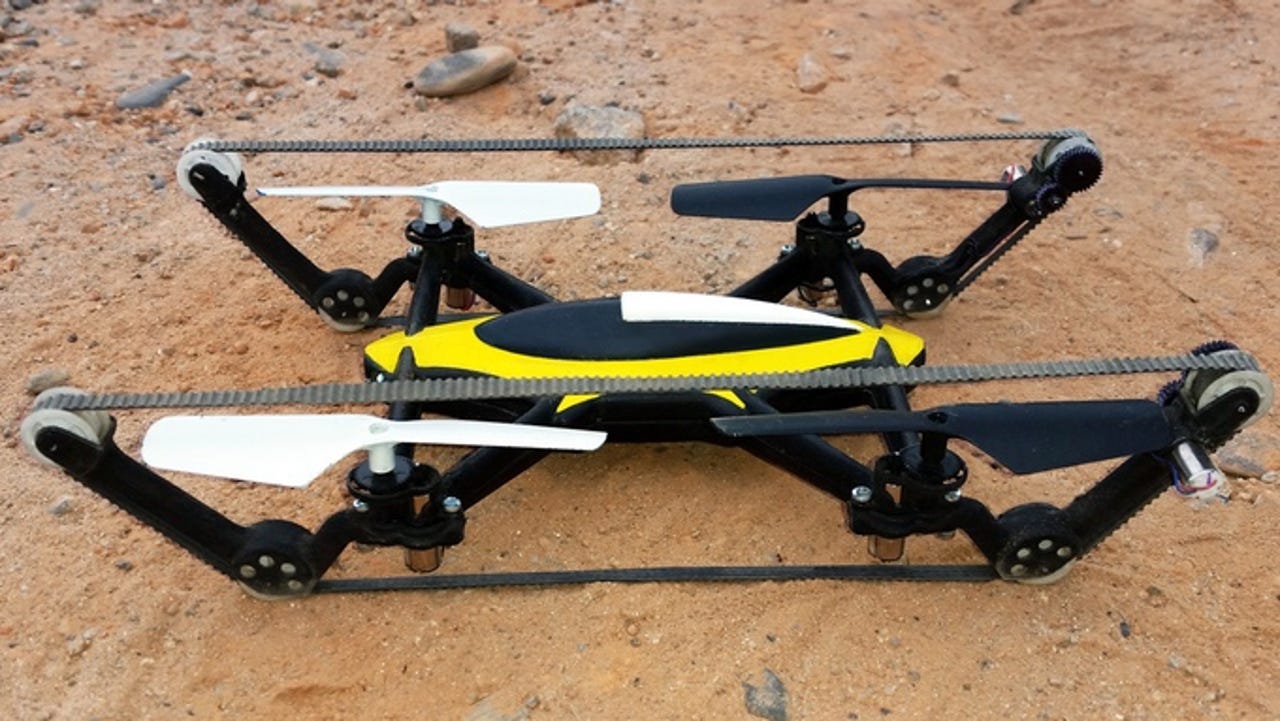Robots for the masses: Kickstarter becomes showcase for robotic innovation


B-Unstoppable
There are drones, and then there are drones you can take into battle. The B-Unstoppable is a treaded drone that’s as agile on land as it is in the air. Flicking a mode button will convert tank to quadcopter. In the air, the B-unstoppable is controlled just like any other quadcopter. On the ground, each track is controlled by separate channel so you get the full experience of driving a tank.
Mini-Mole
Thanks to iRobot, the first personal robots to penetrate the home en masse are designed to do your dirty work. Mini-Mole is a cheap alternative to expensive robot vacuums, and unlike bulky units, the small duster can fit under low couches and furniture. It uses its built-in micro-controller, numerous sensors, and independently powered wheels to pull disposable or washable cleaning pads. Like many of the robots on Kickstarter, crucial body components were 3D printed.
MyoWare
Electromyography sensors are the stuff of futuristic bionics, and not the realm of enthusiast tinkerers, right? Wrong. MyoWare is a fourth generation EMG sensor that can be used to build astounding things, like bionic prostheses that respond to a person's natural muscle movements. The harder you flex, the more motor units are recruited to generate muscle force. The greater the number of motor units, the more the electrical activity of your muscle increases. The device analyzes this electrical activity and outputs an analog signal that can be used as a control input for any kind of machine imaginable. MyoWare sponsors Limbitless, an organization that makes 3D-printed myoelectric prosthetic arms and donates them to children in need around the world.
OpenROV
An oldie but a goodie, OpenROV is a Kickstarter success story. The project was funded in 2012 and new generations of the autonomous submersible have been rolling out ever since. The unmanned underwater vehicle streams HD video back to the surface via a wire tether. Small enough to fit in a backpack (man-packable, in the industry argot), it’s built with exploration in mind. But it could be just as useful inspecting potentially compromised infrastructure after disasters. The original project raised $111,622.
Robotic Pipe Repair
Pipes are an integral and fragile part of the physical infrastructure that supports modern society. Everyday, people are sent into sewer, freshwater, and drainage pipes to inspect, clean, and coat. The work is hazardous and repetitive, and there’s no reason it can’t be performed by robots. This modular, treaded pipe inspecting and cleaning robot can enter pipes from 72 to 102 inches wide, significantly reducing the need for manned entry.
PhoneDrone
It’s like the highest-stakes selfie ever. The PhoneDrone takes your smartphone (iPhone or Android) onboard with it. The phone controls the quadcopter and takes video in flight. The PhoneDrone returns when the batteries are running low, the integrated flight management tool in the app means that you can control altitude and location for your flight path, and you can tether the phone on-board with another phone. The drone folds up for easy transportation, and a built-in mirror provides an elegant low tech solution for shooting video forward, and not just straight down. At sub-$200, it’s one of the cheapest quadcopters we’ve seen.
Roby
Think your kid’s a whiz on the computer? Wait until you see what she can do with a robot. Educational robots are all over the place right now. Roby is a 3D printed robot kit that teaches users programming, robotics, and 3D design. The little four-wheeled platform can balance and drive on two wheels and has arms to stand up if it falls. True to its maker roots, it incorporates the Arduino platform, a Raspberry Pi computer, and LINUX-based operating system. It also has WiFi and Bluetooth connectivity. You (or your kid) can teach it voice commands and program it to do your bidding. Just make sure you use it for good.